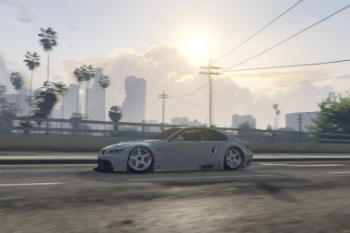
Then in 1885, Gottlieb Daimler patented the technique of using a gear-driven pump to force air into an internal combustion engine. Use of superchargers began in 1878, when several supercharged two-stroke gas engines were built using a design by Scottish engineer Dugald Clerk. Prior to the invention of the turbocharger, forced induction was only possible using mechanically-powered superchargers. However, up until the mid-20th century, a turbocharger was called a "turbosupercharger" and was considered a type of supercharger. The current categorisation is that a turbocharger is powered by the kinetic energy of the exhaust gases, whereas a supercharger is mechanically powered (usually by a belt from the engine's crankshaft). Safety concerns include turbocharger failures and high exhaust temperatures, which can cause car fires.

Turbochargers are used in various applications, including petrol and diesel engines, with increasing adoption in petrol engines. Twincharging combines both systems to mitigate their weaknesses. Turbochargers differ from superchargers, as they are powered by exhaust gas instead of being mechanically driven by the engine. Multiple turbochargers can be used to address these issues, with twin-turbo being the most common arrangement. Turbo lag and boost threshold affect power delivery, and various methods can be employed to reduce turbo lag. Turbochargers utilize additional components such as intercoolers, water injection, wastegates, and blowoff valves to improve engine performance. The center hub rotating assembly connects the turbine to the compressor and may be water-cooled to protect the turbocharger's lubricating oil from overheating. Electrically-assisted turbochargers combine exhaust-powered turbines with electric motors to reduce turbo lag. Twin-scroll turbochargers use two separate exhaust gas inlets to optimize exhaust gas flow, while variable-geometry turbochargers adjust the turbine housing geometry to maintain the optimum aspect ratio. The turbine extracts kinetic energy from exhaust gases to power the compressor, which pressurizes intake air before entering the engine. The main components of a turbocharger include a turbine, compressor, and center housing hub rotating assembly. Turbochargers for passenger cars gained popularity in the 1980s, with the first models being the Chevrolet Corvair Monza and Oldsmobile Jetfire in 1962. During World War II, they were used in various aircraft engines, and Swiss truck manufacturer Saurer pioneered their use in the 1930s. Turbochargers were first used commercially in 1925, increasing the power output of diesel engines in two large passenger ships. The birth of the turbocharger is often attributed to Swiss engineer Alfred Büchi's 1905 patent, with the first prototype completed in 1915.

The history of turbochargers began in 1878 with the invention of mechanically-powered superchargers.

It uses this energy to compress the intake air, forcing more air into the engine in order to produce more power for a given displacement. In an internal combustion engine, a turbocharger (also known as a turbo or a turbosupercharger) is a forced induction device that is powered by the flow of exhaust gases. I'm sure there are more technical things like bpv/bov placement, ic piping, turbo configuration, or even the engine that would affect how efficient the pressure relief system is venting charge air so it doesn't back-feed through the compressor outlet of the turbo.Cut-away view turbocharger (turbine section on the left, compressor section on the right) Get it working and enjoy the surge-less driving. Then find THE RIGHT VALVE, ie one that doesn't have an overly tight spring. Add an extra 1" minimum fitting for a second bpv and make sure your vacuum sources are dedicated. If your trying to kill your turkey because it's driving you nuts and people are looking at you funny, do what has been said a million times.

It didn't matter where the adjustment was on the TS valve either, it still produced the same result. Running that valve along with the stock bpv reduced (didn't eliminate) the surge to a loud 'chirp' and still surged/fluttered while driving around at lighter loads. Take a look at the turbosmart bpv in the second picture, it has 38mm (1.4") fittings. Since most don't run much higher than 10 psi, these valves still cause the surge and flutter. Most of the aftermarket 'upgrades' are designed for higher boost than what we run in our msp's so they require more pressure from the turbo to vent properly. One thing I haven't really seen mentioned is having THE RIGHT BOV/BPV.


 0 kommentar(er)
0 kommentar(er)
